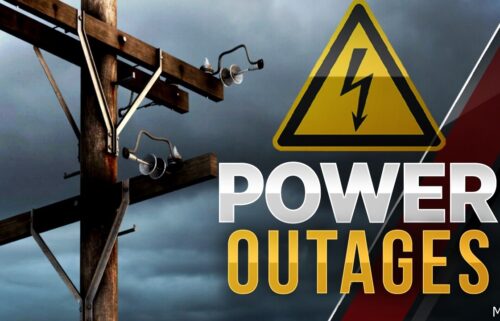Pizza has a delivery problem
By Danielle Wiener-Bronner, CNN Business
Pizza places have always been experts when it comes to delivery, flexing with remote drop-offs and robot delivery cars. But now they’re facing a problem: not enough drivers.
In early March, Domino’s then-CEO Ritch Allison warned that a driver shortage would be a drag on business.
“Delivery driver staffing may remain a significant challenge in the near term,” he said, pointing to a dip in deliveries in the last quarter of 2021 compared to the prior year.
He was right — and the problem has continued into this year. In the first three months of 2022, delivery at Domino’s US stores open at least a year fell by 10.7% compared to the prior-year period, Allison said in an April analyst call, noting that he’s “disappointed” with the delivery results. Overall, sales at those stores fell 3.6% in that period, due in part to staffing issues.
The difficulty finding and keeping employees has hampered businesses across multiple sectors, but the restaurant industry has been hit particularly hard, leading to shorter operating hours and longer wait times for customers.
It’s not just Domino’s. Pizza Hut, owned by Yum Brands, is also hurting. The brand’s same-store sales in the United States dropped 6% in the first quarter due to “our delivery channel, where capacity constraints limited our ability to meet demand,” said Yum Brands CEO David Gibbs during an analyst call discussing the results. “This was driven by staffing challenges, mainly from delivery driver shortages that have been felt across the industry.”
Slow service is bad for business, and not just because of missed sales — a few late pizzas from Domino’s could send someone straight into the arms of Pizza Hut, Papa Johns or another competitor.
So how do you solve the delivery problem? Hiring more drivers is the obvious solution, but that isn’t easy.
The US jobs market has not yet fully recovered from the pandemic, but it’s getting there. Of the 22 million jobs lost after Covid-19 hit the United States in 2020, about 20.8 million have been restored. And the labor market seems to be cooling down this year, making hiring more difficult.
Meanwhile, demand for delivery is through the roof. Domino’s noted that although its delivery rate has fallen compared to 2021, it’s still up nearly 6% over 2019. Other restaurants are also reporting higher demand, and predict that it will stick.
Driver shortages also could become a vicious cycle, noted Cowen restaurant analyst Andrew Charles.
“Drivers take the job because they want to make tips. If there’s less deliveries to make .. that hurts in trying to get delivery drivers,” he said. “I don’t think this is a very easy solve.”
Pizza companies will have to do more than just try to convince more drivers to deliver more pizzas. Filling the void will require other changes, like outsourcing phone orders to dedicated call centers, leaning more heavily on tech and, if they can swing it, charging more for pizza.
Call centers and delivery providers
One way to add more drivers without hiring more people is to reassign current employees. Domino’s is hoping call centers will help.
The company is “facing some pretty severe staffing shortfalls,” Charles said. “So whatever they can do to help alleviate that is under consideration.” He estimated that about 10% to 15% of Domino’s US orders are made over the phone.
By mid-May, Domino’s expects between 2,500 and 3,000 Domino’s locations to be using external call centers in some way. They should “allow stores to focus on production and delivery when they’re short-staffed during peak hours,” said CEO Russell Weiner during the April call.
In addition to tapping call centers, Domino’s is also working to make employees’ jobs easier, including using tech that will make hiring and training better, a spokesperson told CNN Business. So far, Domino’s has stayed away from third-party delivery providers such as DoorDash, Uber Eats or Grubhub, which charge a commission fee — but “nothing is off the table,” said Weiner.
Pizza Hut is also taking several steps to help fix its delivery issues.
“The team is prioritizing restaurant operations, including a focus on improving staffing levels, restoring operating hours, increasing online ordering availability and more effectively leveraging the use of our overflow call centers,” said Yum Brands CEO David Gibbs during a May analyst call. But Pizza Hut has also been using third-party delivery drivers to “augment our own delivery drivers,” he said.
Gibbs is hoping a tech acquisition will help improve the situation.
Last year, the company completed its purchase of Dragontail, which has an AI-enabled platform designed to make restaurant operations more efficient, including reducing disruptions due to driver shortages. The brand is piloting the platform in more than 100 of its thousands of US stores to try to upgrade the delivery network.
Another way to reduce the impact of the problem? Charge customers more.
The Papa Johns solution
Papa Johns has also faced staffing shortages, but “we feel pretty good about staffing,” said CEO Robert Lynch during a May analyst call discussing first quarter results. In North America, sales at Papa Johns stores open at least a year popped 1.9% in the first quarter.
Lynch thinks the company’s partnership with third-party aggregators has helped, but what’s really giving him confidence is the company’s pricing strategy. “Our premium positioning is a different model than the folks who are talking about staffing” as a big issue, he said.
“We’re premium-priced. We don’t need quite as many transactions, and therefore, we’re less impacted by the staffing challenges that we’re all seeing.” In other words, it doesn’t matter as much to Papa Johns how many customers buy its pizza, because each pie is priced higher than what its main competitors charge.
Until the worker shortage eases, however, pizza lovers might have to wait a little longer for their pies.
The-CNN-Wire
™ & © 2022 Cable News Network, Inc., a WarnerMedia Company. All rights reserved.



